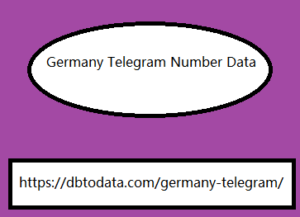Post by kmstfatema on Mar 9, 2024 3:49:40 GMT
We have already talked about the email subject in one of our articles in the past ( which can be visited by clicking here ), but today we want to focus totally on this important element of email marketing. By analyzing its characteristics, usefulness and seeing some practical examples, we will be able to understand how such a simple variable can influence so much the performance of a campaign. Let's start by understanding what role the email subject plays and some good practices to increase its performance. Email Subject: What is it? Let's start with a definition: the mail object is that element which, once our inbox is opened, appears as a "preview" of the message .
It is generally a short sentence; it is useful for the Germany Telegram Number Data reader to understand, in broad terms, what the subject of the message addressed to him is. In the next paragraph we will see some practical advice for writing the email subject, but the objective of this element must be clear: to attract the reader's attention and convince him to open the message . If an object is not able to reach this goal, the entire campaign risks being compromised, as the contents inside the email will probably not even be displayed. A further risk, relating to deliverability and spam cataloging , must be considered; To find out more, please refer to our dedicated article, which can be visited by clicking here . How to write the subject of an email? Starting from a general definition, it is important to know that the subject of the email must be clear, short and must show, alongside the name of the sender brand, the central topic of its content.

Since the progressive shift in the use of content from desktop to mobile, the length of the object has also changed: a typical inbox offers around 60 characters, while a display on a smartphone offers around half as many. To avoid the text being cut off, concentrating everything necessary in 25-30 characters is essential. The use of terms such as "free", "promotion", "offer" should also be avoided, as they are elements often used in spam mail and exploited to attract attention. In many cases, providers automatically move the message to the spam folder when they detect similar patterns. A further piece of advice, with a view to making it easier to memorize and search, is to use simple terms . Going beyond branding, simple, valuable and memorable terms will help the user easily recall the message later, without having to struggle to remember complex words or concepts. Email subject: practical examples Now that we have seen some useful information and a clear definition of what the email subject is, let's analyze some practical examples.
It is generally a short sentence; it is useful for the Germany Telegram Number Data reader to understand, in broad terms, what the subject of the message addressed to him is. In the next paragraph we will see some practical advice for writing the email subject, but the objective of this element must be clear: to attract the reader's attention and convince him to open the message . If an object is not able to reach this goal, the entire campaign risks being compromised, as the contents inside the email will probably not even be displayed. A further risk, relating to deliverability and spam cataloging , must be considered; To find out more, please refer to our dedicated article, which can be visited by clicking here . How to write the subject of an email? Starting from a general definition, it is important to know that the subject of the email must be clear, short and must show, alongside the name of the sender brand, the central topic of its content.

Since the progressive shift in the use of content from desktop to mobile, the length of the object has also changed: a typical inbox offers around 60 characters, while a display on a smartphone offers around half as many. To avoid the text being cut off, concentrating everything necessary in 25-30 characters is essential. The use of terms such as "free", "promotion", "offer" should also be avoided, as they are elements often used in spam mail and exploited to attract attention. In many cases, providers automatically move the message to the spam folder when they detect similar patterns. A further piece of advice, with a view to making it easier to memorize and search, is to use simple terms . Going beyond branding, simple, valuable and memorable terms will help the user easily recall the message later, without having to struggle to remember complex words or concepts. Email subject: practical examples Now that we have seen some useful information and a clear definition of what the email subject is, let's analyze some practical examples.
